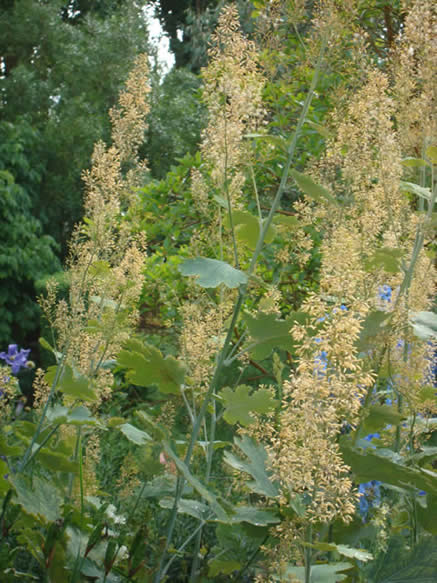Back to latest Flower of the Week
Macleaya cordata – the plume poppy
‘Poppy’gives the wrong idea entirely of this upstanding giant with thousands of tiny buff bell-like flowers and extravagantly exotic leaves. How misleading botany can be. The leaves alone, though, would be reason enough to grow it. Are they cordate? It’s a pretty theatrical version of the standard heart-shape of most other plants with the name cordata. Macleaya’s leaves are fretworked with scallops and flourishes out of a strange substance that is pale green on top and milky-blue beneath, and moreover full of bright orange sap. From underneath, in sunshine, the orange veins through blue are a strange and beautiful sight.
Macleaya was formerly called Bocconia. Now its name recalls Alexander Macleay of Wick, one of those great Victorians who combined natural philosophy (he was secretary of the Linnean Society and a famous entomologist) with a civil service career. For the latter part of his life he lived in Sydney and virtually ran New South Wales. Nor did his son or grandson let down the name; both were big in the insect world. I’m not sure how a chinese plant comes to bear their name.
Convention advises against planting macleaya in conventional borders. In two or three years it grows to eight or nine feet, and in unpredictable places, with powerful invasive roots. An island bed of its own, with the mower keeping it from straying, is the cautious plan. I can’t resist it soaring up beside the delphiniums and emerging wittily from a patch of phlox. Just now it is king of the border.
Back to previous Flower of the Week
|

|